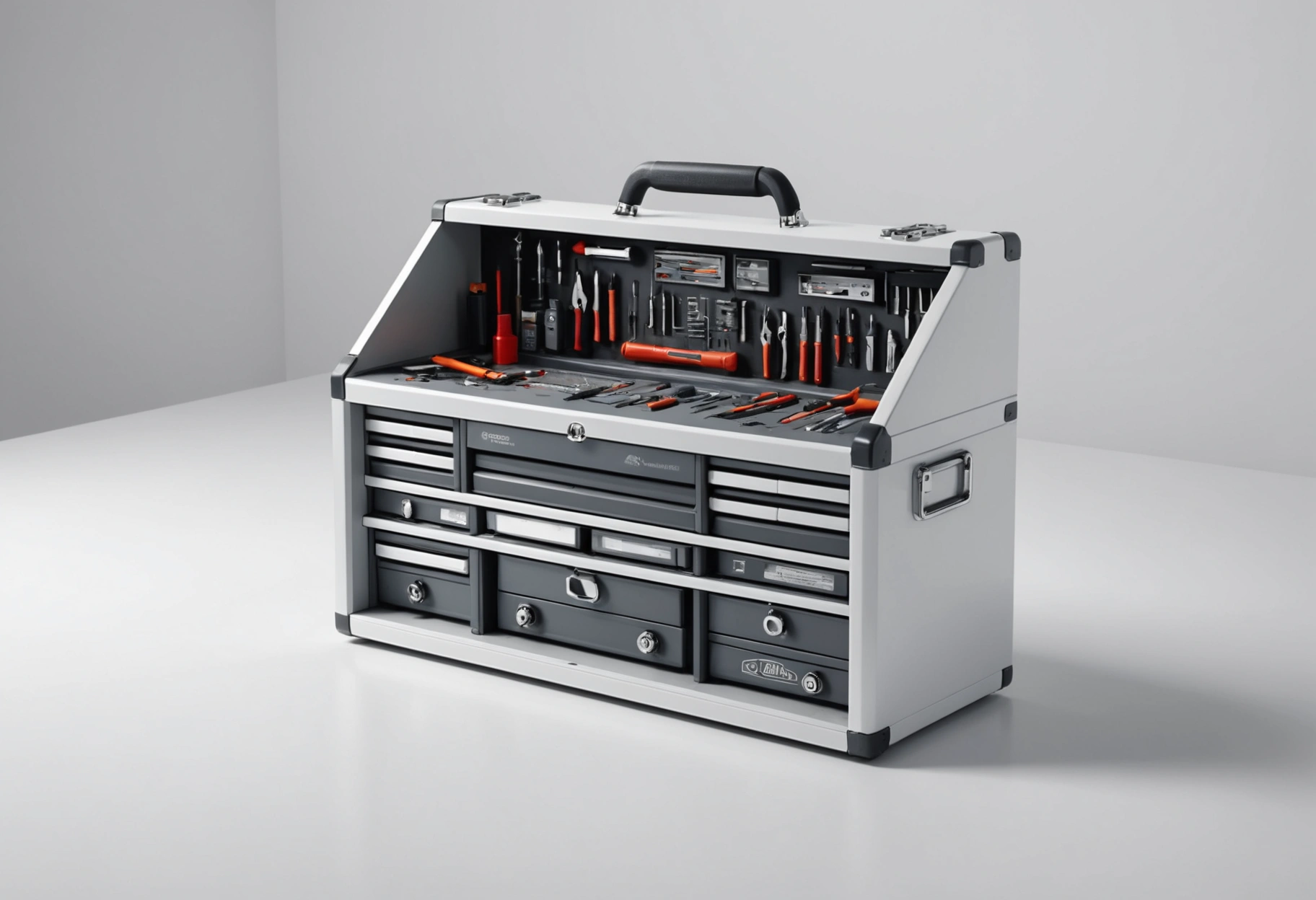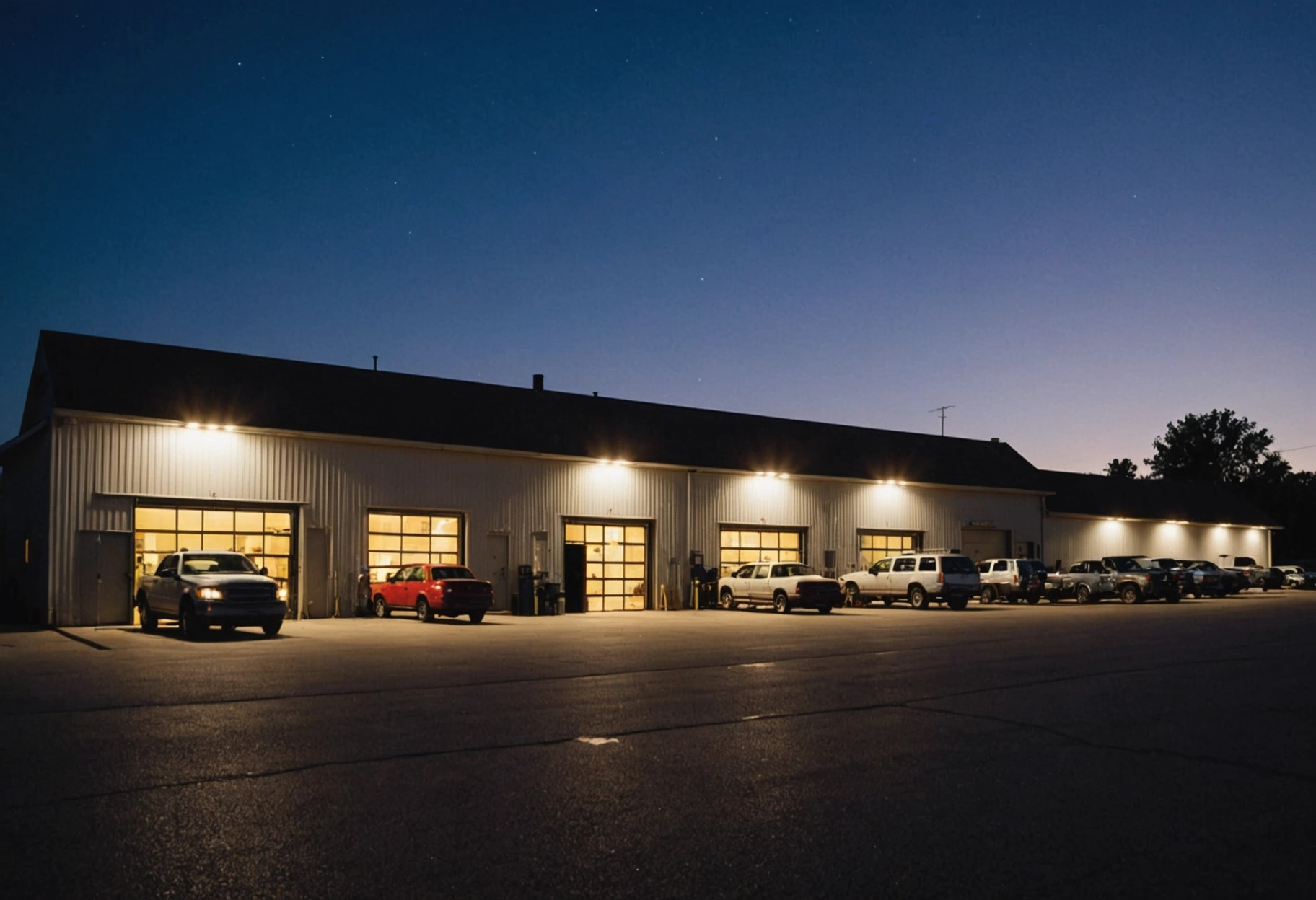The Role of Advanced Diagnostic Tools in Modern Auto Collision Repair
In today’s fast-paced world, the automobile industry is rapidly evolving, with technology playing a pivotal role in every aspect of vehicle production, maintenance, and repair. Among the most significant advancements in the realm of auto collision repair are advanced diagnostic tools. These state-of-the-art devices and software solutions have transformed how technicians assess, diagnose, and repair vehicles after collisions, ensuring safety, efficiency, and precision.
This blog post delves into the essential role these tools play in modern auto collision repair, exploring their impact on the industry, the types of tools available, and the benefits they offer to both repair professionals and vehicle owners.
Understanding Advanced Diagnostic Tools
Advanced diagnostic tools encompass a wide range of technologies designed to identify issues within a vehicle’s complex systems. These tools can evaluate everything from engine performance to electronic components, providing technicians with detailed information crucial for accurate repairs. As vehicles become more technologically advanced, the need for sophisticated diagnostic equipment has grown exponentially.
Today’s vehicles are equipped with numerous onboard computers, sensors, and electronic systems that interact seamlessly to ensure optimal performance. When a collision occurs, these systems may be compromised, necessitating thorough diagnostics to identify and address any issues. Advanced diagnostic tools allow technicians to access the vehicle’s onboard diagnostics (OBD), retrieve error codes, and perform in-depth analyses to pinpoint problems.
The Evolution of Diagnostic Tools in the Automotive Industry
Historically, vehicle diagnostics involved a manual process where technicians relied on their expertise and experience to detect issues. This often required extensive trial and error, leading to longer repair times and increased costs for vehicle owners. The advent of electronic diagnostic tools revolutionized the industry, introducing a new level of precision and efficiency in automotive diagnostics.

The progression from manual to computerized diagnostics marked a significant milestone, allowing technicians to interface directly with the vehicle’s systems. With the introduction of the OBD-II system in the mid-1990s, vehicles were equipped with standardized diagnostic ports that facilitated universal access to vital data. This advancement set the stage for the development of today’s sophisticated diagnostic tools, which continue to evolve alongside automotive technology.
Types of Advanced Diagnostic Tools
Advanced diagnostic tools are diverse, each designed to address specific components or systems within a vehicle. Some of the most common tools include:
- OBD-II Scanners: These handheld devices connect to the vehicle’s diagnostic port, allowing technicians to read error codes and monitor real-time data. They are essential for identifying issues related to the engine, transmission, and emissions systems.
- Diagnostic Software: Often used in conjunction with OBD-II scanners, diagnostic software provides a comprehensive analysis of the vehicle’s systems. This software can simulate various driving conditions to test components and ensure they function properly.
- Thermal Imaging Cameras: These devices detect heat patterns within the vehicle, helping technicians identify overheating components or electrical issues that may not be visible to the naked eye.
- Oscilloscopes: Used to measure electrical signals within the vehicle, oscilloscopes are crucial for diagnosing issues related to sensors and electronic circuits.
- Specialized Tools: In addition to general diagnostic equipment, many manufacturers offer proprietary tools tailored to their specific models. These tools provide unique insights into the vehicle’s systems, ensuring precise repairs.
The Impact of Advanced Diagnostic Tools on Collision Repair
The integration of advanced diagnostic tools into collision repair processes has had a profound impact on the industry. One of the most significant benefits is the ability to perform accurate and efficient diagnostics, which reduces repair times and enhances the overall quality of service. By swiftly identifying the root cause of issues, technicians can implement targeted solutions, minimizing the risk of further damage and ensuring the vehicle is restored to its pre-accident condition.
Moreover, these tools play a crucial role in maintaining the safety and reliability of repaired vehicles. In the aftermath of a collision, even minor damage to electronic systems can compromise a vehicle’s safety features, such as airbags, anti-lock braking systems, and traction control. Advanced diagnostic tools allow technicians to verify the functionality of these systems, providing peace of mind to vehicle owners and reducing the likelihood of post-repair complications.

Benefits for Repair Professionals and Vehicle Owners
Advanced diagnostic tools offer numerous advantages for both repair professionals and vehicle owners. For technicians, these tools streamline the diagnostic process, enabling them to work more efficiently and effectively. This not only enhances productivity but also allows repair shops to handle a higher volume of vehicles, ultimately boosting profitability.
For vehicle owners, the benefits are equally compelling. Accurate diagnostics lead to more reliable repairs, reducing the likelihood of recurring issues and expensive follow-up visits. Additionally, the use of advanced tools often translates to shorter repair times, minimizing inconvenience and getting drivers back on the road sooner.
Furthermore, the precision offered by advanced diagnostic tools can result in cost savings for vehicle owners. By accurately identifying the specific components or systems in need of repair, technicians can avoid unnecessary replacements and focus on addressing the root cause of the problem. This targeted approach helps prevent overspending on parts and labor, making collision repair more affordable.
Challenges and Considerations
While the benefits of advanced diagnostic tools are undeniable, there are challenges and considerations that repair professionals must navigate. One significant challenge is the need for continuous training and education. As automotive technology advances, technicians must stay abreast of the latest diagnostic techniques and tools to provide effective service. This requires ongoing investment in training programs and certifications, which can be both time-consuming and costly.
Additionally, the cost of acquiring and maintaining advanced diagnostic tools can be a barrier for some repair shops. High-quality equipment often comes with a substantial price tag, and regular updates and maintenance are essential to ensure optimal performance. However, the long-term benefits of these tools, including improved efficiency and customer satisfaction, often outweigh the initial investment.
The Future of Auto Collision Repair Diagnostics

The future of auto collision repair diagnostics is promising, with ongoing advancements in technology paving the way for even more sophisticated tools and techniques. As autonomous vehicles and electric cars become more prevalent, the demand for specialized diagnostic equipment will continue to grow. Repair professionals will need to adapt to these changes, embracing new technologies to remain competitive in the evolving automotive landscape.
Additionally, the integration of artificial intelligence and machine learning into diagnostic tools holds the potential to revolutionize the industry further. These technologies can enhance the accuracy and speed of diagnostics, providing technicians with valuable insights and predictive capabilities. As these innovations become more accessible, they will undoubtedly shape the future of auto collision repair, driving advancements in safety, efficiency, and customer satisfaction.
Takeaways
In conclusion, advanced diagnostic tools have become indispensable in modern auto collision repair, offering unparalleled precision and efficiency in diagnosing and repairing vehicles. These tools have transformed the industry, providing significant benefits to repair professionals and vehicle owners alike. As technology continues to evolve, the role of diagnostic tools will only become more critical, shaping the future of automotive repair and maintenance.
The ongoing development and adoption of cutting-edge diagnostic technology will ensure that repair shops can meet the demands of increasingly complex vehicles, delivering high-quality service and maintaining the safety and reliability of repaired vehicles. For those in the automotive repair industry, staying informed about emerging diagnostic tools and techniques is essential to remaining competitive and providing top-notch service in an ever-changing landscape.
Training and Certification for Using Advanced Diagnostic Tools
As advanced diagnostic tools become a staple in the auto collision repair industry, the importance of proper training and certification cannot be overstated. Technicians must be proficient in using these tools to harness their full potential, ensuring that repairs are both accurate and efficient. Many manufacturers and independent organizations offer training programs specifically designed to educate technicians on the latest diagnostic equipment and techniques.

Certification programs provide a structured pathway for technicians to gain the necessary skills and knowledge. These programs often cover a wide range of topics, including interpreting diagnostic codes, using diagnostic software, and understanding vehicle electronic systems. By obtaining certifications, technicians can demonstrate their expertise, instilling confidence in both employers and customers.
Furthermore, ongoing education is vital in keeping pace with the rapid advancements in automotive technology. Regular workshops, seminars, and online courses enable technicians to stay updated on the latest trends and tools. Repair shops that prioritize continuous learning are better equipped to offer cutting-edge services, setting themselves apart in a competitive market.
The Role of Collaboration in Advancing Diagnostic Tools
The development and enhancement of advanced diagnostic tools are driven by collaboration among various stakeholders in the automotive industry. Manufacturers, software developers, and repair professionals work together to identify challenges and create innovative solutions. This collaborative approach ensures that diagnostic tools evolve to meet the changing needs of both technicians and vehicle owners.
For instance, partnerships between automotive manufacturers and technology companies have led to the creation of proprietary diagnostic tools that cater to specific vehicle models. These collaborations leverage the expertise of both parties, resulting in tools that offer unparalleled accuracy and functionality. Additionally, feedback from repair professionals plays a crucial role in refining these tools, ensuring they address real-world challenges effectively.
Industry events and conferences provide valuable opportunities for stakeholders to exchange ideas and insights. These gatherings foster collaboration and innovation, driving advancements in diagnostic tools and techniques. By working together, the automotive industry can continue to push the boundaries of what’s possible in vehicle diagnostics, enhancing the overall quality of collision repair services.
Customer Education and Transparency

In addition to benefiting repair professionals, advanced diagnostic tools offer significant advantages to vehicle owners. However, to fully appreciate these benefits, customers must understand the role these tools play in the repair process. Educating customers about the technology and its implications can foster trust and transparency, enhancing the overall repair experience.
Repair shops can take proactive steps to inform customers about how diagnostic tools work and why they are essential for modern collision repair. Providing detailed explanations of diagnostic reports and walking customers through the repair process can help demystify the technology, highlighting its value in ensuring accurate and reliable repairs.
Moreover, transparent communication about the use of diagnostic tools can build customer confidence. When vehicle owners understand the thoroughness and precision that advanced diagnostics bring to the table, they are more likely to appreciate the quality of service provided. This transparency can lead to increased customer satisfaction and loyalty, benefiting repair shops in the long run.
Embracing the Future of Auto Collision Repair
The role of advanced diagnostic tools in modern auto collision repair is both transformative and indispensable. As the automotive industry continues to evolve, these tools will remain at the forefront of innovation, driving improvements in accuracy, efficiency, and safety. For repair professionals, embracing these advancements is crucial to staying competitive and delivering exceptional service.
The future of auto collision repair promises exciting opportunities for those willing to invest in the latest diagnostic technology and training. By leveraging advanced tools, repair shops can enhance their capabilities, meet the demands of increasingly complex vehicles, and provide unparalleled service to their customers.
Ultimately, the integration of advanced diagnostic tools represents a significant step forward in the automotive repair industry. As technology continues to advance, these tools will play an even more vital role in shaping the future of collision repair, ensuring that vehicles are restored to their optimal condition with precision and care.
Need help with The Role of Advanced Diagnostic Tools in Modern Auto Collision Repair?

